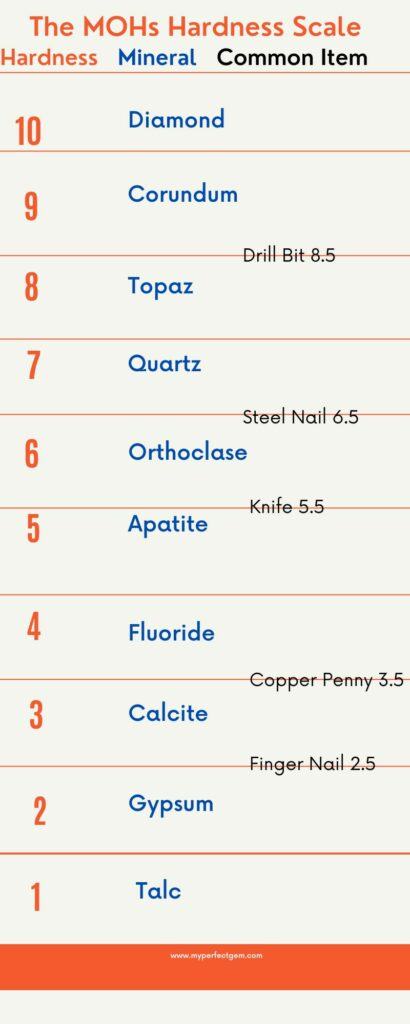The MOHs Hardness scale is used to identify the types of minerals. The MOHs scale of 10 is the highest, the higher the MOHs hardness scale of a mineral is the better scratch resistance it is. This scale measurement was introduced in 1812 and named after its creator, the German geologist and mineralogist Friedrich Mohs.
The hardest mineral is diamond
Though identifying the hardness of the mineral is one of the easiest and common method for you to identify the types of minerals that you have, it may not be an accurate predictor of how well the materials can endure.
Though the hardest mineral is diamond, it can still cracked when hit at the right angle of the stone, so, do not try hammering your stone, just to prove that it is diamond.
The hardness of a material is measured against the MOHs hardness scale by finding the hardest material that the given material can scratch, or the softest material that can scratch the given material. For example, if some material is scratched by apatite but not by fluorite, its hardness on the Mohs scale would be between 4 and 5.

Corundum
Corundum has MOHs scale hardness of 9, the second highest from diamond. Corundum makes up rubies and sapphires.
